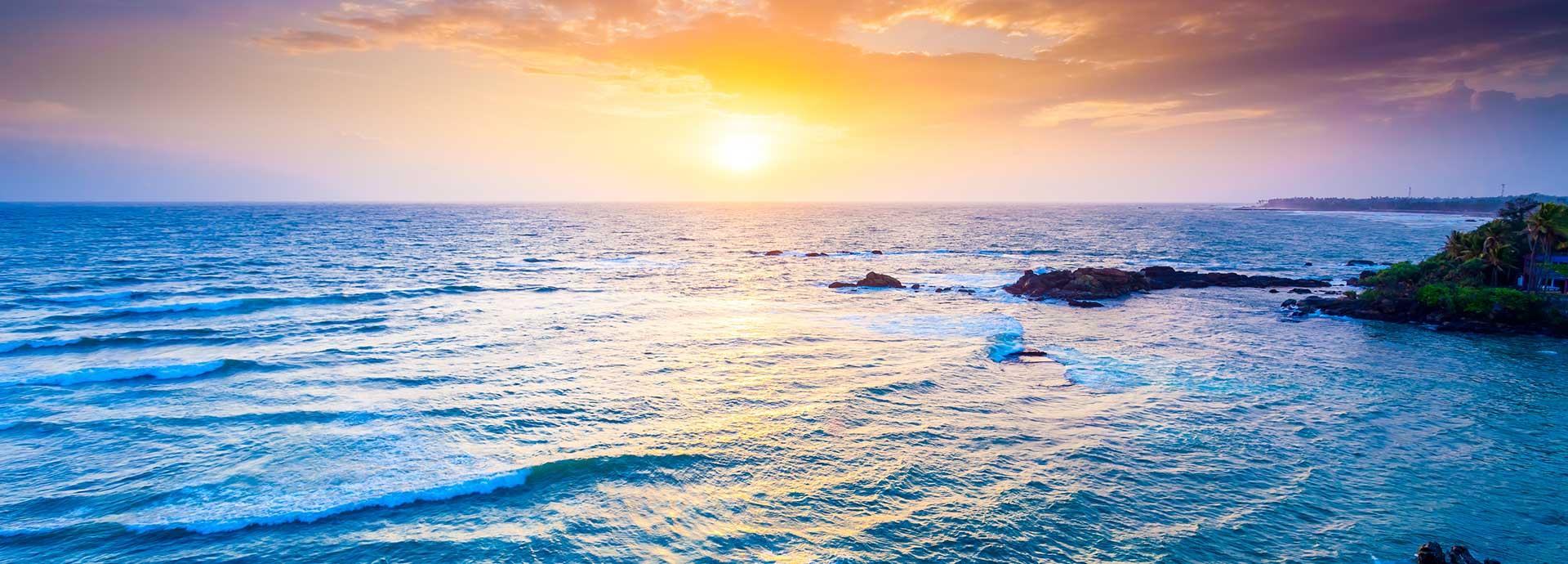

Knowledge is power when it comes to improving ocean health, yet only a tiny fraction of our marine and coastal areas are comprehensively monitored. Luckily, new technologies, approaches, and players – including 'citizen scientists' and private sector supporters – are lining up to help fill this ocean data chasm.
With the livelihoods of an estimated three billion people dependent on the oceans, it's no surprise that issues like climate change, habitat loss and other alarming ocean health trends are quickly rising to the top of the global agenda. But gaining a clear picture of what's happening in the oceans is easier said than done. Less than five percent of the oceans are effectively monitored, according to observations published by the World Economic Forum, leaving “a pressing need to gather data at higher frequency, quality and variety” in order to set adequate ocean health management policies.
This line from data to policy is well understood by researchers working on the Ocean Health Index (OHI), a collaborative framework to evaluate ocean ecosystems that was set up by University of California, Santa Barbara's National Center for Ecological Analysis and Synthesis (NCEAS) and Conservation International. The OHI's scope goes far beyond traditional oceanography and marine science, drawing on more than a hundred databases to include human factors like population and economics into its assessments.
Julia Stewart Lowndes, PhD, is an NCEAS marine researcher who works on the index as a project scientist. For her and her colleagues, the need for more data is clear.
“We always say you can't manage what you can't measure,” says Lowndes. Though satellite information from NASA and data from NOAA are available for areas throughout the globe, she explained, they're just a starting point. It's vital to have in-water samplings over time. “That's really good for both validating the satellite records and for seeing how different parts of the ocean are changing at different rates.”
Advances in technology are showing promise in filling in the gaps. Biologists are benefiting from improved animal tags, better remote vehicles and the exciting, new field of environmental DNA. A start-up near San Francisco has developed Saildrones, unmanned vehicles that make months'-long voyages to remote ocean areas and send data to NOAA, in real time.
Can ocean health benefit from digitisation?
The move towards digitisation is opening opportunities for private sector involvement. Eniram, the Wärtsilä-owned company focused on advanced data solutions, oversees the real-time remote monitoring of about 300 ships for Wärtsilä’s customers. Along with information on engine performance, fuel consumption and the like, sensors on board collect and transmit data related to ocean conditions such as weather, currents, depths and seawater temperatures as these ships crisscross the globe.
Melvin Mathews, Director Maritime at Eniram, believes this data can and should – with customers' permission – be anonymised and shared with researchers to add to the body of ocean data being collected.
“There is a lot of information we're getting that could be useful. This information, when analysed over time, can show changes in measurements so we can actually track progress. We can put our finger on what's getting worse,” says Mathews.
He adds that he would like to see information sharing not only from the ships Wärtsilä monitors, but also from the roughly 2000 to 3000 ships that use similar advanced data platforms.
“If the information is there, why not share?” he asks. “This is not only an obligation, but a responsibility of the private sector. It needs to be part of protecting and preserving the oceans.”
Interpreting the data
In a similar fashion, technology has now created another non-traditional source for ocean data. A US-based non-profit has developed Smartfin, a surfboard fin packed with low-cost sensors that measure multiple ocean parameters and transmit the data to the Scripps Institution of Oceanography in San Diego for analysis. Smartfin founder Andrew Stern says it could be particularly useful in monitoring conditions around coral reefs and pinpointing potential trouble spots that could benefit from active intervention.
Stern's goal is to distribute Smartfin on a loan basis to thousands of surfers, effectively turning them into citizen scientists. “I hope to really build an energised, empowered community around Smartfin,” he notes. “I think it's going to engage surfers and the general public in science in a cool way that's more accessible. It will lead to far more people claiming a voice around climate.”
New levels of innovation and participation are certainly encouraging signs for ocean data collection efforts. Lowndes notes, however, that data-gathering itself is just one piece of the ocean health puzzle. It's critical, she says, that the data be freely available and properly managed, and that researchers share their analyses.
“As technology keeps advancing and it gets easier and cheaper to collect more and more data, it's important to think about who has access to that data and the analyses that are done with that data. And I think these things go hand-in-hand, especially if we want to translate that data into knowledge and management action,” she says.
Clearly, gaining the necessary insights into our marine and coastal ecosystems is a demanding task, but heightened collaboration and new ideas could bridge the data gap, giving new hope for healing the oceans.


